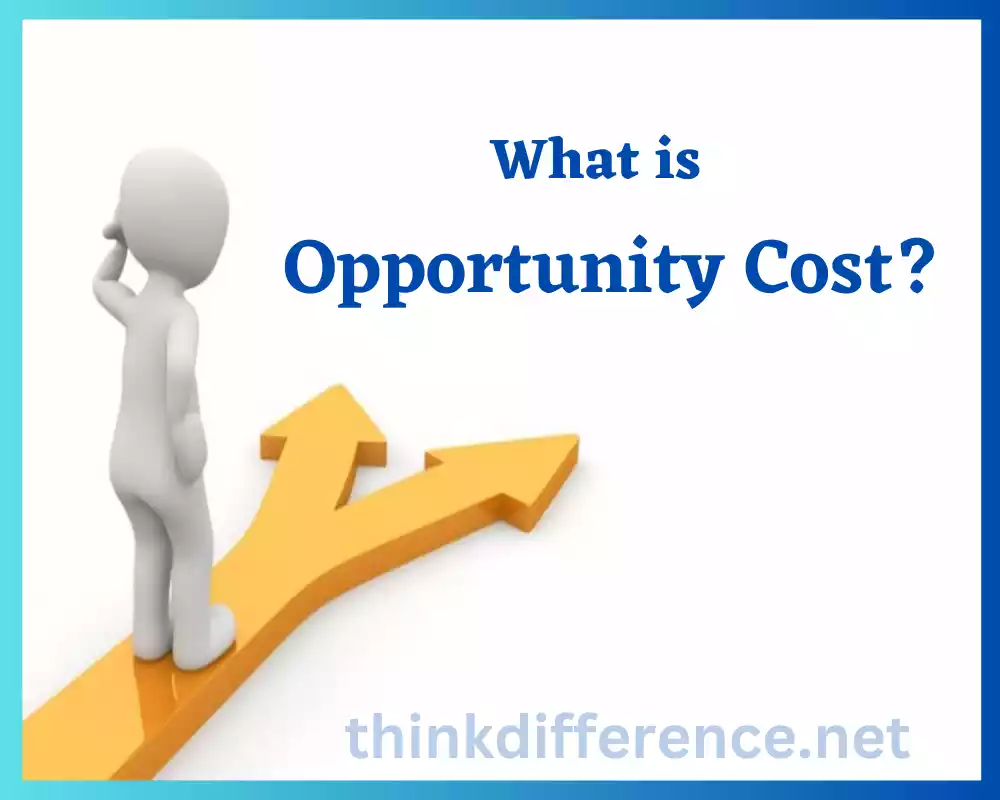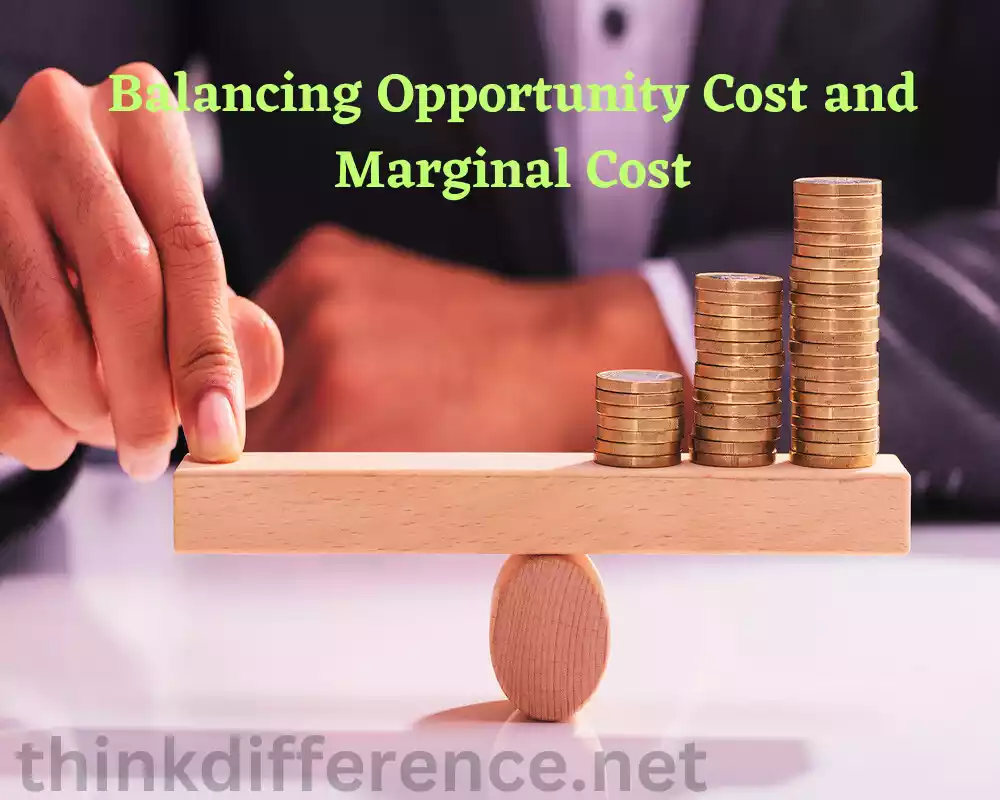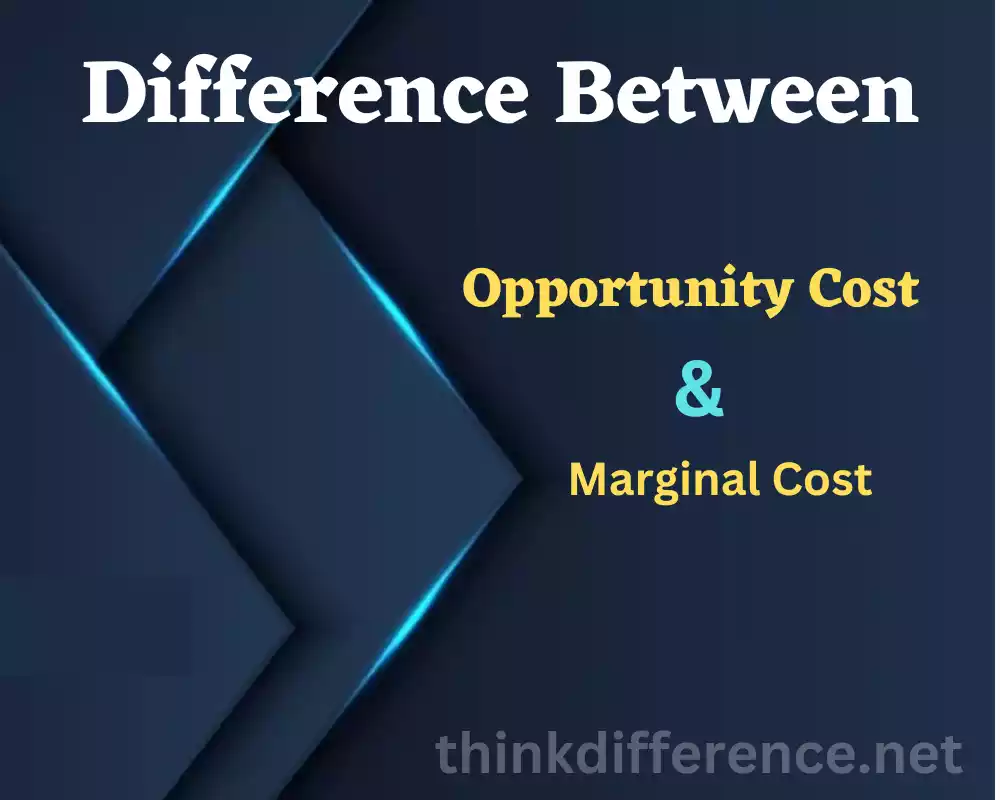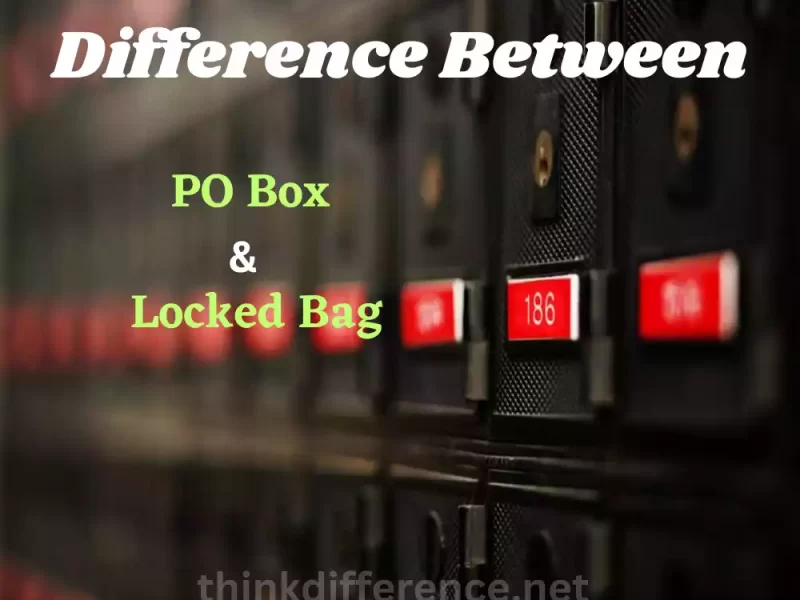Opportunity Cost and Marginal Cost theories are two essential tools used by industries producing products, yet don’t directly correlate. They help industries determine how production can be expanded to increase profits. In this article we provide an in-depth examination of both concepts – their similarities and distinctions will also be covered here.
What is Opportunity Cost?
Opportunity cost refers to the value of alternatives that were disregarded when making decisions or selecting courses of action, effectively representing lost advantages or opportunities resulting from selecting one option over another.

Cost of Opportunity arises due to resource limitations, when making decisions that impact a certain aspect of life or society, people, businesses or governments need to carefully consider all available alternatives that could have provided more advantages in return.
Consider investing $1,000 into stocks versus using it to start your own entrepreneurial venture: In either scenario, its potential returns could have come in different forms. If investing it directly would mean any potential returns that might have come through another route such as placing it with stock companies; conversely if creating your business would mean it costing even more when considering that option as its opportunity cost may include lost gains derived by placing those dollars elsewhere instead of placing into stocks instead.
Understanding what an opportunity cost means can help both individuals and businesses make informed decisions by considering all available alternatives and tradeoffs.
How Opportunity Cost Affects Decision Making
Opportunity cost has an outsize influence in decision-making processes as it compels individuals and companies alike to consider all of the tradeoffs associated with selecting one option over another. Opportunity costs play an integral part of these decisions – impacting them both positively and negatively.
- Evaluation of Alternatives: Opportunity cost requires decision-makers to evaluate the potential benefits and drawbacks of different alternatives. It prompts them to consider the value and opportunities that will be forgone by selecting a particular option. By assessing the opportunity costs of each alternative, decision-makers can make more informed and thoughtful choices.
- Comparative Analysis: Opportunity cost enables decision-makers to compare the relative benefits and costs of different options. Provides a framework to evaluate the value provided by various options and their respective advantages and disadvantages. This comparative analysis helps in identifying the most advantageous option and understanding the potential consequences of choosing one alternative over another.
- Consideration of Trade-Offs: Decision-making often involves making trade-offs between competing alternatives. Opportunity cost highlights these trade-offs by revealing what must be sacrificed when a particular choice is made. It prompts decision-makers to consider the potential benefits or opportunities that will be lost by choosing one option over another.
- Long-Term Perspective: Opportunity costs provide decision makers with an incentive to consider long-term effects when making choices, thereby making more informed choices that have positive results in terms of impact on future prospects and impacts on oneself. By recognizing the potential benefits foregone in the long run, decision-makers can avoid short-sighted decisions that may result in suboptimal outcomes or missed opportunities.
- Value Optimization: Opportunity cost helps in optimizing value by identifying the alternative that offers the highest benefits relative to its costs. By comparing the opportunity costs of different options, decision-makers can select the option that provides the most significant net benefit or value. This leads to more efficient resource allocation and maximizes the overall benefits gained from the chosen option.
- Risk Assessment: Opportunity cost also plays a role in assessing risks associated with different choices. Decision makers must carefully consider all risks and uncertainties associated with any given option before evaluating its costs in relation to these potential threats. This analysis assists in identifying and mitigating potential risks and making decisions that balance risk and reward.
Opportunity cost influences decision-making by encouraging individuals and organizations to carefully evaluate alternatives, consider trade-offs, compare benefits and costs, take a long-term perspective, optimize value, and assess risks. As long as individuals understand the cost-benefit analysis involved with decision-making, they will make more educated choices which meet their goals and lead to improved results.
What is Marginal Cost?
Marginal cost refers to the additional cost incurred by producing one more unit of a good or service. It is a fundamental concept in economics that helps businesses and producers understand the cost structure of their operations.

Marginal cost is derived from the change in total cost when there is a change in the quantity produced. Considerations is also given to variable costs that fluctuate with production levels – these costs include labor, raw materials and energy expenses. Fixed costs, such as rent or machinery are not considered in the calculation of marginal cost since they do not change with production levels.
To calculate marginal costs, divide the difference in total cost between production runs by production runs; mathematically speaking this would equal “M”.
Marginal Cost = (Change in Total Cost) / (Change in Quantity)
Assume for instance that a company produces 100 widgets at an expense of $1,000 each and production increases to 101 widgets at $1.020; total costs would change by $20 (Split between total costs incurred at creating one additional widget and increased quantity = $20); thus the marginal cost per extra widget created would also equal $20.
Knowing their marginal costs is critical in business decisions when attempting to determine optimal production levels and pricing strategies as well as resource allocation decisions. Knowing this figure helps decision-makers evaluate whether increasing or decreasing production would have any financial ramifications and identify advantages of scale that will maximize profits. By analyzing marginal cost in combination with margin revenue (extra revenue generated when selling second units), companies can determine an optimal production level that maximizes earnings over time.
Marginal Cost and Production Decisions
Marginal cost plays a critical role in production decisions. It provides valuable information for determining the optimal level of production and maximizing efficiency.
Here’s how marginal cost affects production decisions:
- Optimal Production Level: Marginal cost analysis helps in determining the optimal level of production. By comparing the additional cost of producing one more unit with the additional revenue generated from selling that unit (marginal revenue), decision-makers can identify the point at which marginal cost equals marginal revenue. Operating at this point, known as the profit-maximizing level of production, ensures that the cost of producing additional units is justified by the revenue they generate.
- Cost Control: Marginal cost analysis allows businesses to monitor and control costs. By assessing the cost implications of each additional unit produced, decision-makers can identify any inefficiencies or cost escalations. They can take proactive measures to address these issues and ensure that production remains cost-effective and efficient.
- Economies and Diseconomies of Scale: Marginal cost analysis helps in understanding economies and diseconomies of scale. Initially, as production increases, marginal cost may decrease due to economies of scale, such as increased specialization or bulk purchasing. Beyond a certain point, marginal cost may start to rise due to diminishing returns or increased coordination and management challenges (diseconomies of scale). Decision-makers can use marginal cost analysis to identify the optimal scale of production that minimizes costs and maximizes efficiency.
- Pricing Strategies: Marginal cost is a crucial factor in determining pricing strategies. By considering the marginal cost of production, businesses can establish pricing levels that cover both variable costs (including the marginal cost) and contribute to fixed costs and desired profit margins. Pricing decisions based on marginal cost help in achieving profitability and remaining competitive in the market.
- Product Mix Decisions: Marginal cost analysis also aids in product mix decisions. Decision-makers can compare the marginal costs and revenues associated with different products or services to determine which ones contribute the most to the overall profitability. By allocating resources and focusing efforts on products with the highest marginal contribution, businesses can optimize their product mix and resource allocation.
- Production Expansion or Contraction: Marginal cost analysis helps in evaluating the cost implications of expanding or contracting production levels. Decision-makers can assess whether the additional costs of expanding production outweigh the expected benefits or whether reducing production would lead to cost savings without significantly affecting revenue. This analysis guides businesses in making informed decisions about expanding into new markets, investing in additional production capacity or adjusting output levels based on market conditions.
Marginal cost analysis is a critical tool in production decisions. It guides decision-makers in determining the optimal production level, controlling costs, understanding economies and diseconomies of scale, establishing pricing strategies, making product mix decisions and evaluating production expansion or contraction. By incorporating marginal cost analysis, businesses can achieve efficiency, profitability and strategic resource allocation in their production processes.
Importance of understanding the difference between Opportunity Cost and Marginal Cost
Understanding the difference between opportunity costs and marginal costs is vitally important for numerous reasons:
- Informed Decision-Making: Differentiating between opportunity cost and marginal cost enables individuals, businesses and policymakers to make more informed decisions. By considering the trade-offs and alternatives associated with opportunity cost, decision-makers can assess the true cost and benefits of their choices. Similarly, understanding marginal cost helps in evaluating the cost implications of producing additional units or making incremental changes in production.
- Efficient Resource Allocation: Both opportunity cost and marginal cost play a crucial role in resource allocation. By comparing the opportunity costs of different options, individuals and organizations can allocate their resources to the activities that offer the highest value or returns. Marginal cost analysis helps in optimizing production levels, ensuring that resources are utilized efficiently and minimizing waste.
- Effective Planning and Forecasting: Differentiating between opportunity cost and marginal cost assists in effective planning and forecasting. Considering the opportunity cost of alternative uses of resources helps in identifying potential risks, benefits and trade-offs associated with different courses of action. Marginal cost analysis provides insights into cost fluctuations as production levels change, enabling businesses to anticipate cost variations and make accurate financial projections.
- Rational Decision-Making in Complex Environments: In complex economic environments, where multiple options and factors are involved, understanding opportunity cost and marginal cost helps decision-makers evaluate the best choices. It allows for a systematic analysis of the costs and benefits associated with each option, leading to more rational and logical decision-making.
- Minimization of Wasteful Expenditure: By understanding opportunity cost and marginal cost, individuals and organizations can avoid wasteful spending or production. Recognizing the potential benefits forgone through opportunity cost prompts decision-makers to critically evaluate the value and necessity of each option. Marginal cost analysis helps identify situations where the additional cost of producing one more unit outweighs the potential benefits, preventing excessive production and resource wastage.
Comprehending the distinction between opportunity cost and marginal cost enhances decision-making, resource allocation, planning and efficient resource utilization. It enables individuals and organizations to make choices that maximize benefits, minimize costs and improve overall economic efficiency.
Differences Between Opportunity Cost and Marginal Cost
There are several key differences between opportunity cost and marginal cost. These differences relate to their meanings, calculation methods, decision-making implications and their relationship to production and consumption.
Here are the main distinctions:
1. Meaning and Scope:
- Opportunity Cost: It represents the value of the best alternative foregone when choosing one option over another. It considers the benefits or opportunities lost by not selecting the next best alternative.
- Marginal Cost: It refers to the additional cost incurred by producing one more unit of a good or service. It focuses on the change in total cost associated with producing an additional unit.
2. Calculation Methods:
- Opportunity Cost: It is typically a subjective assessment and is not always easily quantifiable. It involves comparing the benefits or costs of alternative choices in a given scenario.
- Marginal Cost: It is calculated by dividing the change in total cost by the change in quantity produced. It provides a more objective and quantitative measure of the cost associated with each additional unit.
3. Decision-Making Implications:
- Opportunity Cost: Understanding opportunity cost helps in assessing the trade-offs involved in decision-making. It encourages individuals and organizations to consider the full range of alternatives and their associated benefits or drawbacks.
- Marginal Cost: Marginal cost analysis assists in determining the optimal level of production or consumption. It helps decision-makers evaluate whether producing an additional unit or consuming one more item is cost-effective.
4. Relationship to Production and Consumption:
- Opportunity Cost: It is primarily associated with choices involving resource allocation. It applies to decisions such as investing in different assets, utilizing resources for various purposes or choosing between different production methods.
- Marginal Cost: It directly relates to production decisions. It helps businesses determine the cost implications of increasing or decreasing production levels, identifying the point where the additional cost outweighs the benefit.
5. Long-term Versus Short-term Perspective:
- Opportunity Cost: It considers the broader, long-term implications of decisions. It evaluates the potential benefits or opportunities that may be lost over an extended period.
- Marginal Cost: It focuses on the immediate, short-term cost of producing or consuming one more unit. It emphasizes the cost implications within a specific production or consumption period.
Understanding these differences allows individuals and businesses to approach decision-making and resource allocation in a more comprehensive and strategic manner. Both opportunity cost and marginal cost provide valuable insights but their unique characteristics highlight different aspects of economic analysis and decision-making.
Similarities Between Opportunity Cost and Marginal Cost
Though marginal cost and marginal benefit differ considerably in definition and application, they nonetheless share many key similarities:
- Economic Principles: Both opportunity cost and marginal cost are fundamental concepts in economics. Based on tradeoffs and scarcity concepts, they require limited resources for decision making processes that must make choices quickly.
- Consideration of Alternative Choices: Both concepts involve considering alternative choices and their associated costs or benefits. Opportunity cost involves comparing the benefits or opportunities of choosing one option over another, while marginal cost assesses the cost implications of producing or consuming one more unit.
- Decision-Making Tools: Both opportunity cost and marginal cost provide decision-making tools. Analytic frameworks offer businesses and individuals alike tools for making more informed decisions by assessing both benefits and costs associated with different options available to them.
- Influence on Decision Outcomes: Both concepts have a direct impact on decision outcomes. Opportunity cost helps decision-makers weigh the potential benefits forgone by choosing one option, while marginal cost assists in evaluating the cost-effectiveness of producing or consuming additional units.
- Role in Resource Allocation: Both opportunity cost and marginal cost play a role in resource allocation. They guide individuals and organizations in determining how to allocate scarce resources most effectively to maximize benefits or minimize costs.
- Time Sensitivity: Both concepts are sensitive to the element of time. Opportunity cost considers the long-term implications of choices, while marginal cost focuses on the immediate cost associated with each additional unit produced or consumed.
By recognizing these similarities, individuals can apply a similar analytical mindset to both opportunity cost and marginal cost, helping them make better-informed decisions and allocate resources more efficiently.
The Role of Opportunity Cost and Marginal Cost in Economic Efficiency
Opportunity cost and marginal cost both play significant roles in achieving economic efficiency. They provide insights into resource allocation, production decisions and economic optimization.
Here’s how these concepts contribute to economic efficiency:
- Resource Allocation: Opportunity cost helps in efficient resource allocation by considering the value of alternative uses of resources. By assessing the benefits forgone when choosing one option over another, decision-makers can allocate resources to activities that offer the highest value. This ensures that resources are directed towards the most productive and beneficial uses, leading to improved efficiency in resource allocation.
- Production Decisions: Marginal cost analysis is crucial for optimizing production levels and achieving efficiency. By comparing the cost of producing additional units with the marginal revenue generated from selling those units, businesses can determine the point of maximum profit. Operating at the point where marginal cost equals marginal revenue leads to efficient production levels and maximized profitability.
- Trade-Off Evaluation: Both opportunity cost and marginal cost enable decision-makers to evaluate trade-offs and make informed choices. Considering the opportunity cost of different alternatives helps in identifying the most valuable and beneficial options. Marginal cost analysis assists in determining whether the costs of producing or consuming additional units outweigh the associated benefits. By weighing trade-offs, decision-makers can make choices that optimize efficiency.
- Waste Minimization: Opportunity cost and marginal cost help in minimizing wasteful expenditure or production. By considering the opportunity cost of resources, decision-makers can avoid unnecessary spending on options that provide lower benefits compared to alternatives. Marginal cost analysis allows businesses to identify the point at which producing additional units becomes cost-ineffective, preventing overproduction and resource wastage. Minimizing waste improves efficiency by utilizing resources effectively.
- Overall Economic Optimization: By considering both opportunity cost and marginal cost in decision-making processes, the overall economic system can be optimized. Efficient resource allocation, optimal production levels and minimizing waste contribute to maximizing overall economic output and well-being. By incorporating these concepts, economic efficiency can be enhanced at both microeconomic and macroeconomic levels.
Opportunity cost and marginal cost are integral to achieving economic efficiency. They guide resource allocation, production decisions and trade-off evaluations, leading to optimal use of resources and minimizing waste. By considering these costs, decision-makers can make choices that maximize benefits, minimize costs and contribute to overall economic optimization.
The Importance of Opportunity Cost and Marginal Cost in Resource Allocation
Marginal cost and opportunity cost play an instrumental role in resource allocation. Their use ensures efficient use of limited resources. These concepts are integral when allocating them:
- Assessing Alternative Uses: Opportunity cost helps decision-makers evaluate the value of alternative uses of resources. It prompts individuals and organizations to consider the benefits or opportunities that would be forgone by choosing one option over another. By comparing the opportunity costs associated with different alternatives, decision-makers can identify the most valuable and productive use of resources.
- Maximizing Value: Considering opportunity cost in resource allocation allows for the maximization of value. Resources are directed towards activities or investments that offer the highest returns or benefits relative to their opportunity costs. This ensures that resources are allocated to areas where they can generate the greatest value, leading to improved efficiency and outcomes.
- Rational Decision-Making: Both opportunity cost and marginal cost provide decision-makers with a rational framework for resource allocation. By weighing the costs and benefits of alternative options, decision-makers can make informed choices based on economic principles rather than subjective or arbitrary criteria. This promotes objective decision-making and reduces the likelihood of misallocation of resources.
- Optimal Production Levels: Marginal cost analysis is particularly important in determining optimal production levels. By comparing the cost of producing additional units with the revenue generated, businesses can identify the point where marginal cost equals marginal revenue. Operating at this point ensures that resources are allocated to the production of units that generate the highest profitability, thus maximizing the utilization of resources.
- Efficient Resource Utilization: Both opportunity cost and marginal cost help in achieving efficient resource utilization. By considering opportunity cost, decision-makers avoid wasting resources on options that offer lower benefits compared to alternatives. Marginal cost analysis enables businesses to identify the point of diminishing returns, where the cost of producing additional units exceeds the associated benefits. This prevents overutilization of resources and ensures that resources are allocated optimally to maximize their efficiency.
- Adaptation to Changing Conditions: Both concepts are valuable in adapting resource allocation to changing conditions. By continuously evaluating opportunity costs and marginal costs, decision-makers can adjust their resource allocation strategies in response to market dynamics, resource availability and changing demand. This flexibility allows for efficient allocation of resources in dynamic environments.
Opportunity cost and marginal cost are essential considerations in resource allocation. They provide decision-makers with analytical tools to evaluate alternative uses, maximize value, make rational choices, optimize production levels and ensure efficient resource utilization. By incorporating these concepts, organizations and individuals can allocate resources effectively, leading to improved economic efficiency and outcomes.
Balancing Opportunity Cost and Marginal Cost
Balance between marginal cost and opportunity cost is an integral component of decision-making and resource allocation.

Here are a few suggestions on finding an equilibrium point:
- Define Decision Objectives: Clearly articulate the objectives and priorities of the decision-making process. Identify what factors are most important and what trade-offs are acceptable. This provides a framework for evaluating both opportunity cost and marginal cost in relation to the desired outcomes.
- Evaluate Opportunity Costs: Assess the potential benefits and opportunities foregone when choosing one option over another. Consider the long-term implications and the value of the next best alternative. Compare the expected gains or benefits of each option against their associated opportunity costs.
- Analyze Marginal Costs: Evaluate the additional costs incurred when producing or consuming one more unit. Consider the marginal cost in relation to the marginal benefit or revenue generated from each additional unit. Determine the point at which marginal cost outweighs the marginal benefit, indicating diminishing returns.
- Prioritize Efficiency: Aim for resource allocation that maximizes efficiency and value creation. Identify opportunities where the marginal benefits exceed the marginal costs, indicating a positive return on investment. Consider the opportunity costs of alternative uses of resources and allocate them to activities that offer the highest value relative to their opportunity costs.
- Consider Time Horizon: Recognize that opportunity cost may have a long-term perspective, while marginal cost is often associated with immediate or short-term decisions. Evaluate the implications of decisions over different time horizons to balance the trade-offs between long-term benefits and short-term cost efficiency.
- Incorporate Risk Assessment: Assess the risks associated with each option, including the uncertainties in costs and benefits. Evaluate the potential impact of risks on opportunity cost and marginal cost. Consider the risk tolerance and risk appetite of the decision-maker or organization when weighing these factors.
- Flexibility and Adaptability: Recognize that balancing opportunity cost and marginal cost may require adjustments and flexibility. Conditions and circumstances can change, impacting the trade-offs and cost-benefit analysis. Continuously monitor and reassess decisions to ensure they remain aligned with the changing dynamics.
Achieving a balance between opportunity cost and marginal cost requires a comprehensive evaluation of the benefits, costs, and trade-offs associated with different options. It involves considering both the short-term efficiency and the long-term value creation. By striking the right balance, decision-makers can optimize resource allocation and make informed choices that align with their objectives and priorities.
Conclusion
Opportunity cost and Marginal cost are fundamental concepts in decision-making processes. By understanding the trade-offs and benefits associated with different choices, individuals and businesses can make more informed and rational decisions. Balancing opportunity cost and marginal cost is essential for optimizing outcomes and maximizing benefits.



